Edit 7/21/17: Stupid botophucket!
Here are pics which were luckily still in my computer:





Well, I don't yet know whether or not I ruined a perfectly good pair of $40 junkyard GT40P cylinder heads, but I did drill a Thermactor passage back to the rearmost exhaust port (cyls. 4 & 8 ) on each of them, drilled connecting passages from the roofs of the ports, and drilled and tapped for the bolts which secure the Thermactor crossover tube to the backs of the heads. I'm pretty sure I didn't hit any water or air/fuel, but I guess I'll find out for sure, once I install them. I've got springs from Alex's Parts ordered, and plan to put these heads on my car this summer.
What I'm trying to avoid here, are the error codes 44 and 94, which would occur without this Thermactor mod. They say that those codes won't hurt your performance, but I don't want them there anyway. These passages are for "upstream" air, and the Oxygen sensors will tell the computer if the upstream air isn't there when it should be.
So I brought the heads, lower intake manifold, some fasteners, and an 8 amp corded DeWalt drill out to the garage, and made shavings.
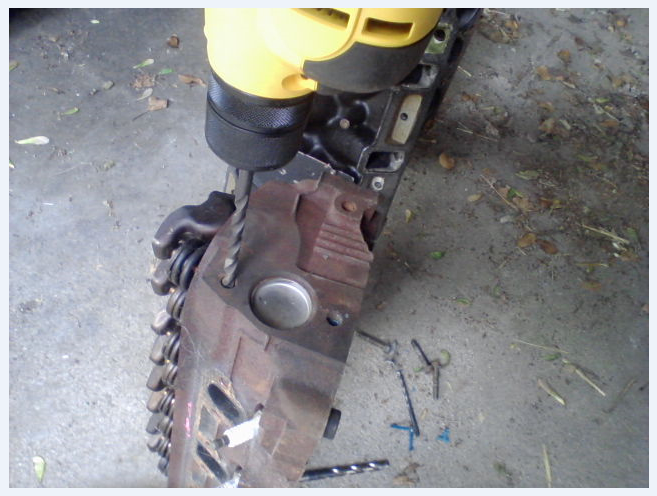
The main Thermactor passage goes through this hole and all the way out the other side, on all Windsor heads which the factory put in Fox bodied vehicles. I don't have access to the kind of tooling which Ford used to do this, so I drilled only to the rearmost exhaust port on each head. (Actually above it.) Doing it this
quarter assed way, I'll avoid having to tap a thread for the proper plug at the fronts of the heads.
For what will be the driver's side head you will need a fairly long drill bit, as it's over 4 inches to the center of the #8 exhaust port. The one I initially selected was long enough but stopped cutting, short of the port. I then tried a narrower (and shorter) bit, and was able to get close enough. I ended up drilling the segment from the port passage at an angle, from the upper rear corner of the port, in order to meet the barely-deep-enough main passage. So if you're looking at the side of the head, the passage would be pointing to 2:00, as it goes upward and rearward. The passenger side port passage was easily drilled straight up, at 12:00.
This is why my main passage holes are two different sizes.
On the passenger side head, it's less than three inches to the center of the #4 rear port, so you'll probably already have a drill bit long enough to do the job.
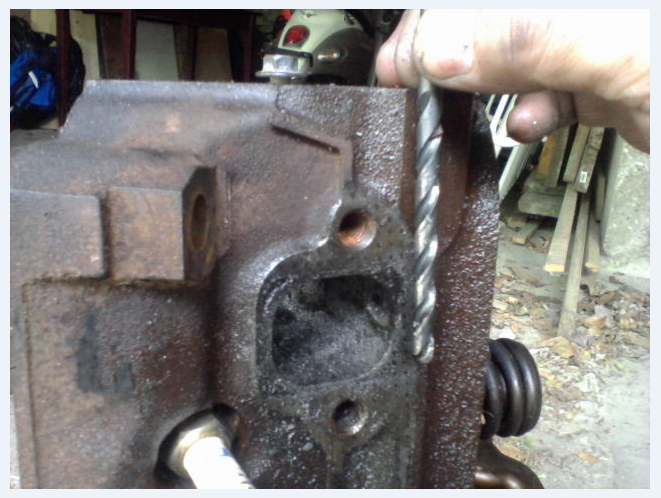
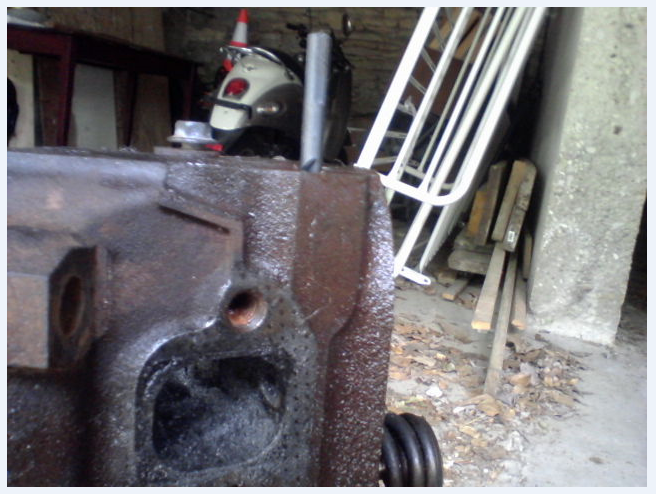
I then drilled through the roof of the exhaust port, and into the passage I'd just drilled. I left the heads standing on end for this, and knew that I'd reached the right place when a bunch of spray lube and WD-40 and metal shavings came out...


I used the same bit for both legs of the passage on the passenger side head, but did not make note of the size. I also eye-balled my angle from the ports into the main passages, and as it seems thus far, was successful.
I then bolted the heads to the lower intake manifold, so I could mock up locations for the holes for the crossover tube's mounting bolts:
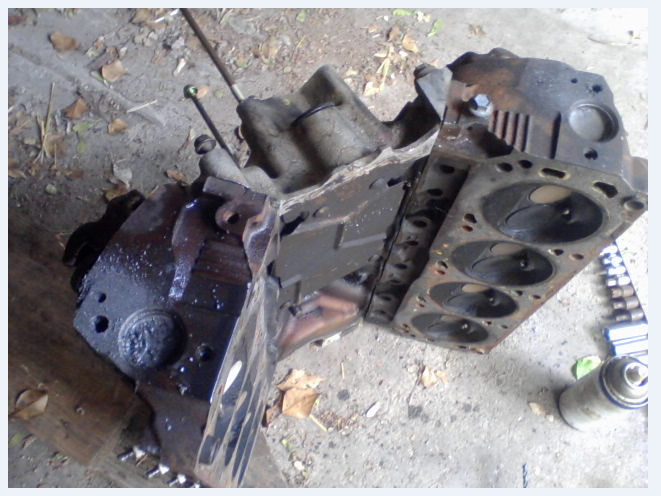
The heads and intake will stand up fairly level, with a block of wood under the driver's side front of the "assembly."
I held the tube in place, and marked the hole locations, and drilled them to a depth which I'd eyeballed. I was lucky, and got deep enough on both heads.
I ran a 5/16ths" - 18 - H3 - 4F taper tap into the holes, and ended up wishing I'd had a non-tapered tap as well, but an extra bolt of the proper size made it good enough to thread the proper bolts deep enough to secure the tube tightly to both heads. I'd bought the taper variety, because I also eyeballed the drill bit which I used to drill the bolt holes. I knew it was at least narrow enough...
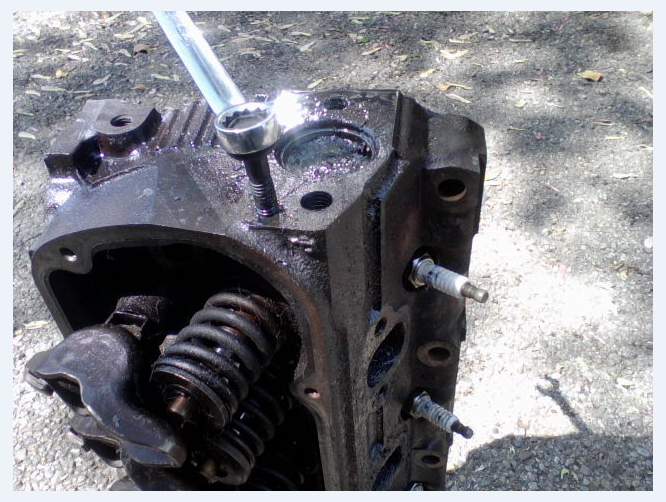
That looks like a crack between the new bolt hole and the freeze plug, but doesn't appear on the head as I look at it now. It's most likely the product of a crappy cell phone camera, and the filth and crud on the head.
Now I just need to disassemble and clean them, and install new seals and the valve springs, and they will be ready to bolt onto my car. I sure hope it all works right.






 Reply With Quote
Reply With Quote








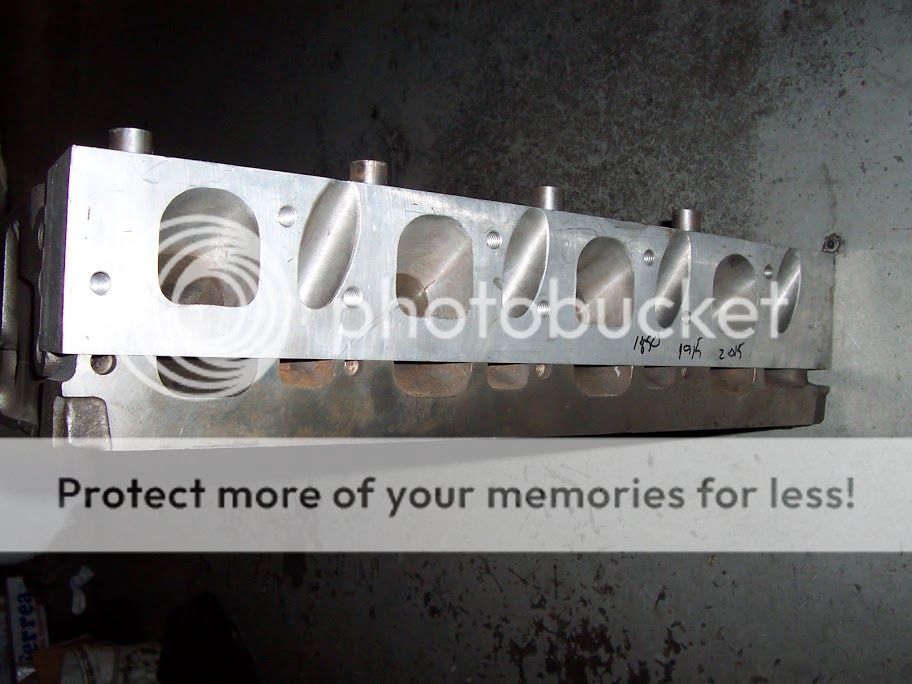







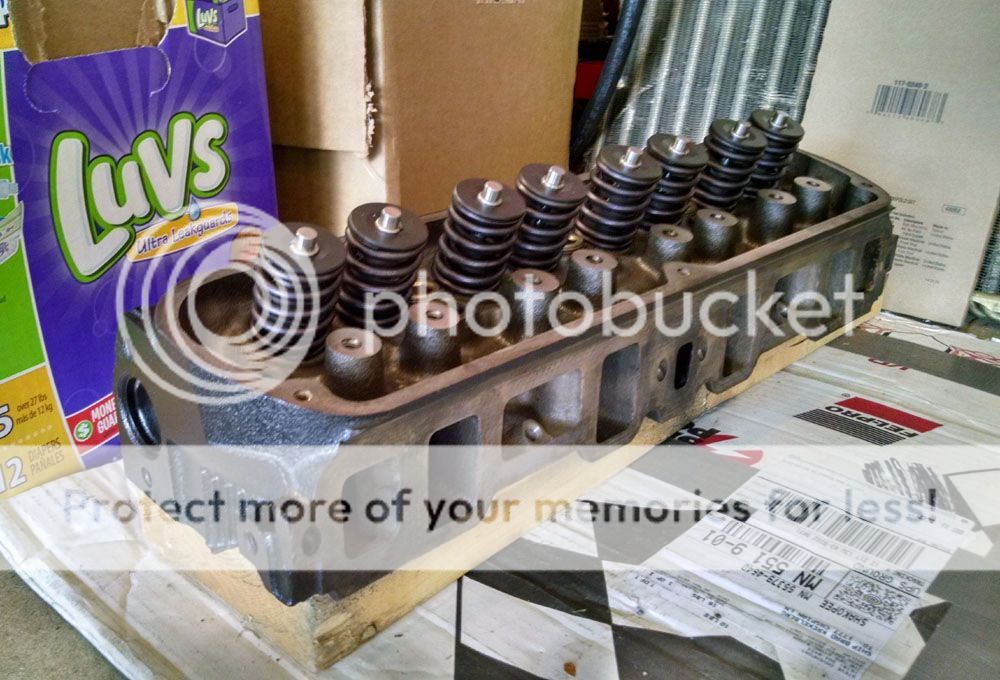





Connect With Us